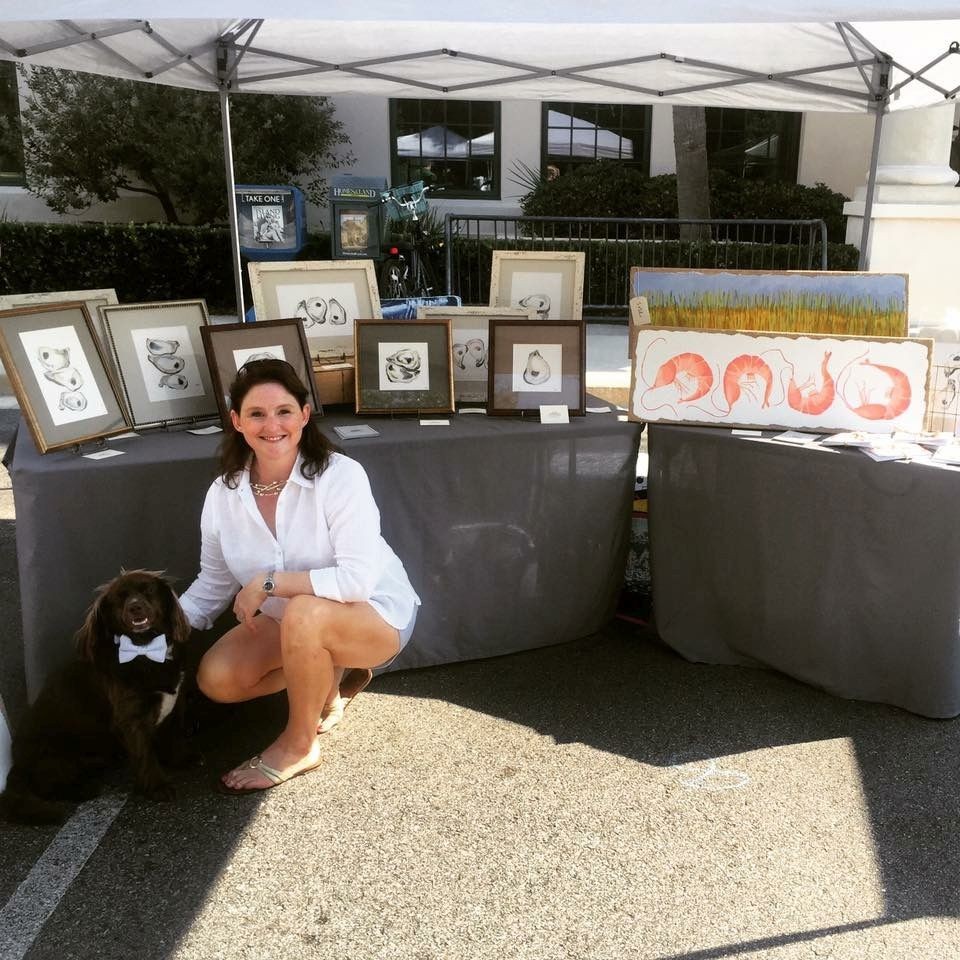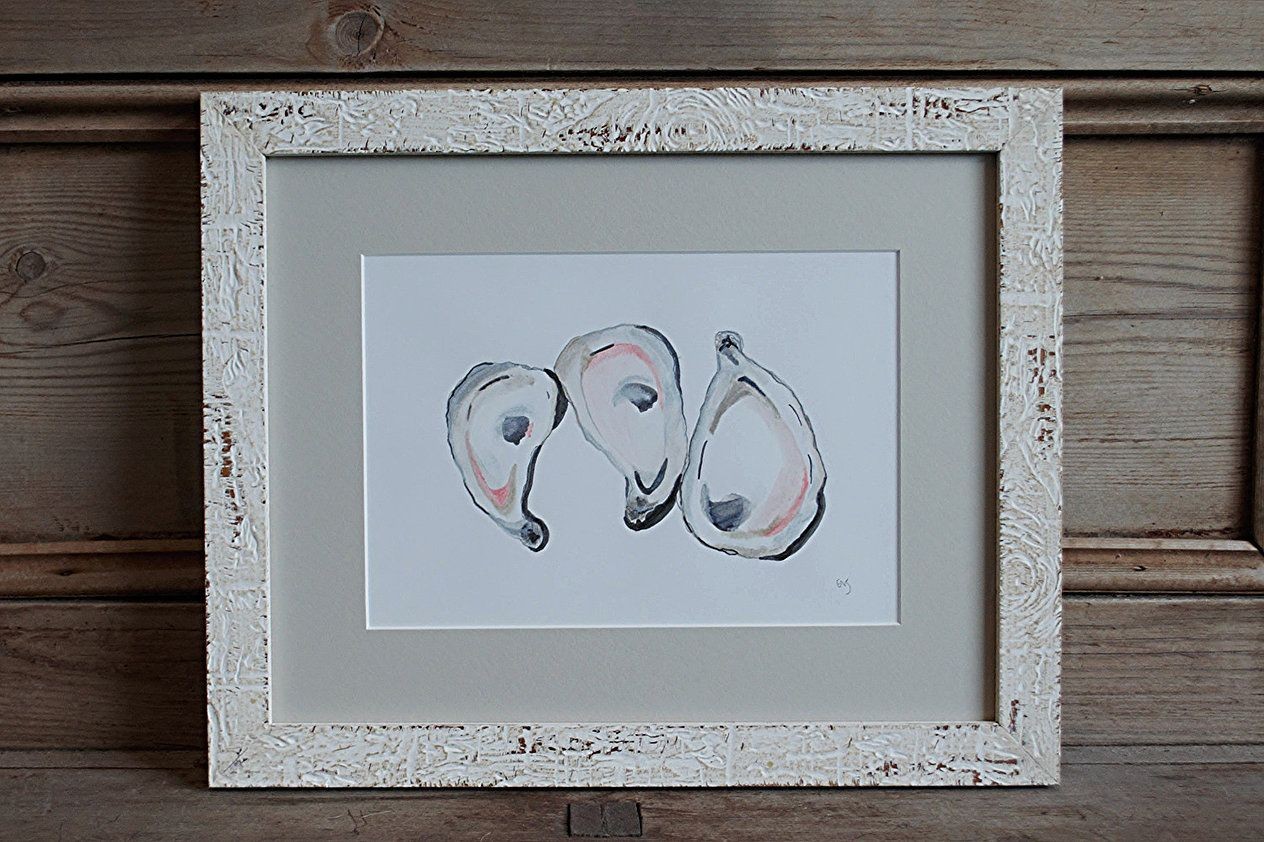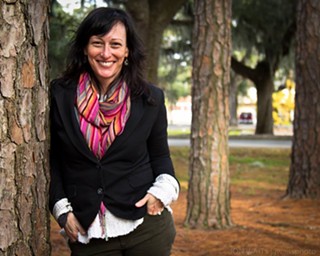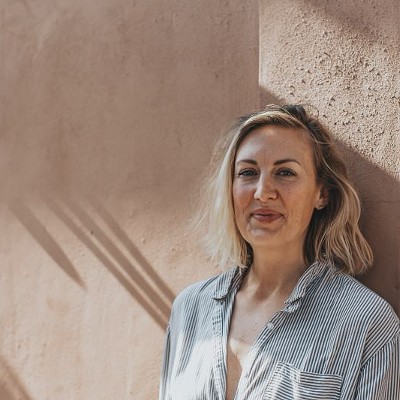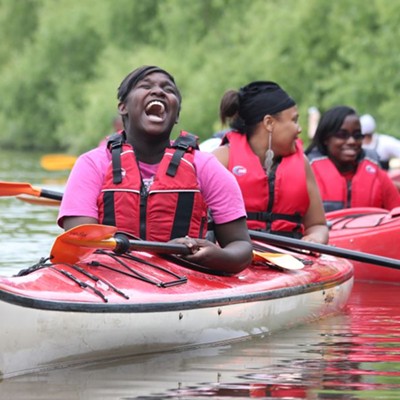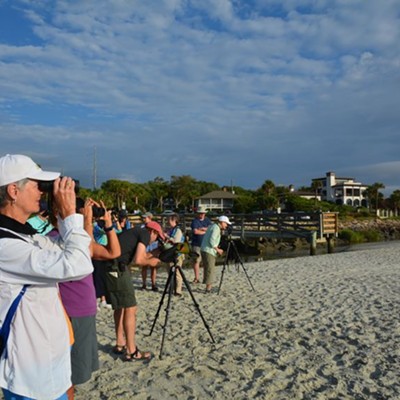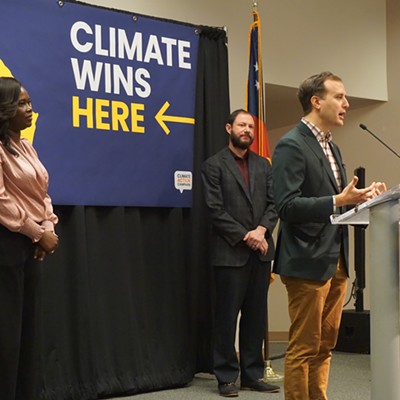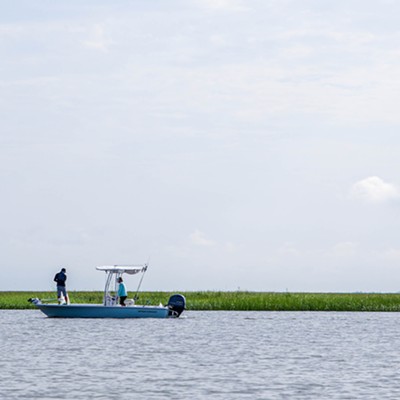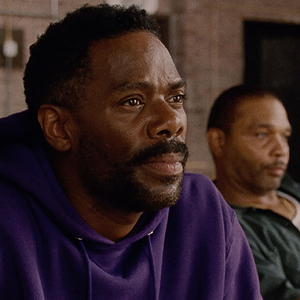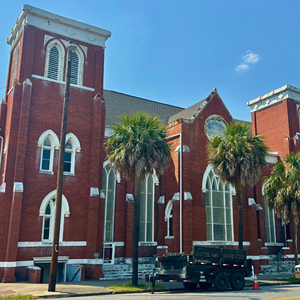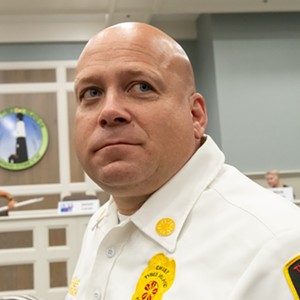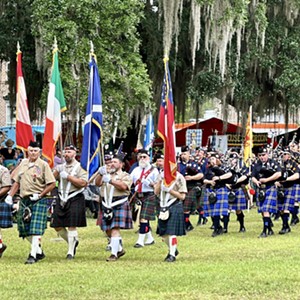WHEN IT comes to oysters, most folks slurp the deliciousness within and toss the shells aside.
Not Elizabeth Slater. The local artist often saves the irregularly-shaped shucks after a Lowcountry feast, lining them up in her studio to study and paint.
“Sometimes I ask to take home my shells from the Pink House and they look at me like I’m nuts,” she says with a laugh.
“But each one is unique, and I’m always trying to capture that particular beauty.”
Slater grew up on her family’s dock on the Grove River near Georgetown, where she not only learned to host an oyster roast but set up a crab pot and throw a shrimp net.
But it’s not just the bounty and the beauty of the coast that inspires her dreamy watercolors of spartina grass and plump pink shellfish.
“The marshes are where life lives in this part of the country, it acts as a filter and rejuvenates the water,” she says, echoing the wisdom of her maternal grandmother, Rebecca Felton Meyer, who inspired the name of her studio, Meyer Slater Art.
To help promote the importance of preserving Georgia’s coastal ecology, Slater has teamed up with advocacy group One Hundred Miles for an interactive art talk on Thursday, Sept. 29 at Smith Brothers Butcher Shop.
Delicious bites from Executive Chef James Levin will be passed and wine will flow as she discusses her techniques and inspiration, which includes the burlap sacks used to transport oysters. A percentage of proceeds from art sales benefit One Hundred Miles.
The collaboration is part of One Hundred Miles’ aim to unify Georgia’s coastal residents as pollution, development and large-scale industry continue to threaten the region’s delicate ecological balance. The Brunswick, GA-based non-profit has become a formidable voice at the state assembly in the past two years, representing coastal communities from Cumberland Island to Tybee and all the inlets and sounds in between. Policy work isn’t always pretty, however, and the group continues to network support through those who are going to live with it.
“Conservationists already know what’s at stake,” says Kelly Patton, OHW membership and outreach coordinator.
“We want to engage more businesses and artists, and the best way to do that is to celebrate the places and people that make our coast unique.”
In addition to an event calendar of art shows, book clubs and cocktail socials up and down the seaboard, OHM also has boots on the ground on Tybee Island, where it recently implemented its “Choose to Reuse” Campaign.
An estimated trillion plastic bags are discarded every year worldwide, and millions end up clogging marshes and oceans and strangling wildlife. According to the World Economic Forum, plastics will outweigh fish in the oceans by 2050 at the current rate of unchecked production and disposal. By using reusable bags, one person removes more than 20,000 plastic bags from the environment over the course of their life.
After last year’s narrow defeat of a proposed ban for single use plastic bags on the island, those working towards reducing plastic pollution had to switch gears.
If they couldn’t legislate cutting down on the amount of plastic bags originating from Tybee, they hope to inspire it by getting businesses to promote reusable bags.
“The one thing that was stopping people was the cost,” says OHM Chief of Coastal Advocacy Paulita Bennett-Martin.
“Business owners were interested in offering them but couldn’t afford to give them away.”
So One Hundred Miles partnered with BYOB founder Ashley Workman as well as the Ogeechee Riverkeeper, Mermaid Cottages, the Surfrider Foundation and other organizations to produce 10,000 reusable bags. A stack of 500 of the sturdy red sacks went out free to every Tybee business that signed the Beach Bag Pledge, which exacts a promise to distribute them to customers and reorder at least one time.
After its launch at the end of August, the Choose to Reuse program received 17 pledges in 13 days. The bags are in hot demand for tourists who want them as souvenirs, and there is talk of it becoming an annual event with a design contest for artists.
“I think it’s safe to say it’s been a success,” says Bennett-Martin.
“We’ve distributed 9000 bags so far, and we’re still getting calls.”
Helping cut down on the amount of plastic in coastal waterways is a way that OHM protects the coast with direct action, though promoting coastal conservation through aesthetic appreciation is also an important tactic.
“I hope that my paintings will inspire people to connect with our marshes and the need to protect them,” says Slater.
She adds that there is much to learn from the majesty of the humble oyster.
“They filter out the bad stuff and make pearls out of it. It doesn’t get any more amazing than that.”

